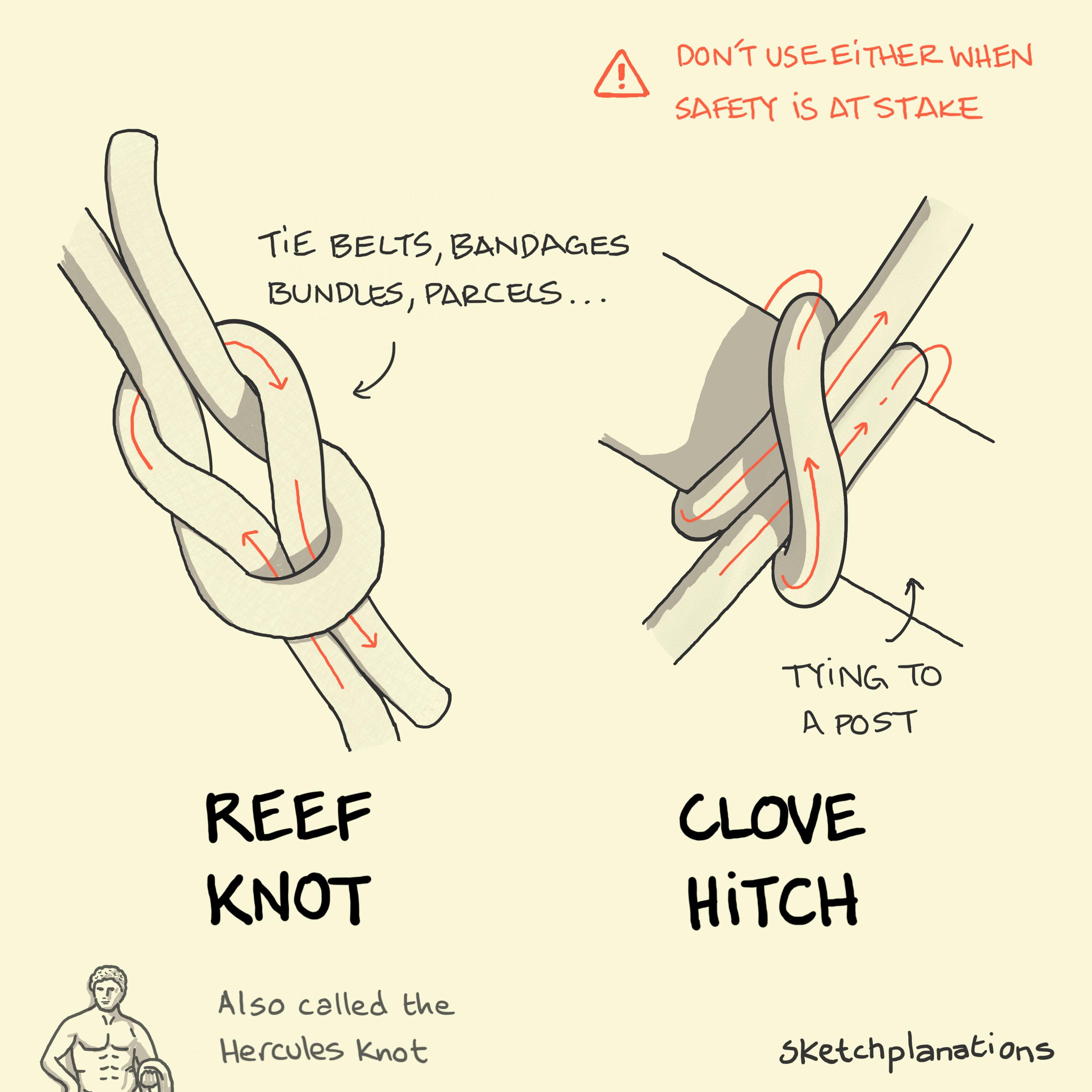Reef knot and clove hitch

- Prints
- Copied!
👇 Get new sketches each week
A refresh for basic guiding and scouting skills — two satisfying and simple, but not secure, knots: the reef knot, or square knot, and the clove hitch.
The reef knot was also known to the ancient Greeks as the Hercules knot. You can use it for non-safety critical things like belts, bandages, tying bundles and parcels but it doesn't hold weight well so don't use it when safety is important.
The clove hitch is a simple knot that can quickly, say, tie a rope to a post. But don't use it if you need something to really hold.
Again, don't use either for safety critical applications, but they're both nice knots to know.
Also see a sheet bend
Published

